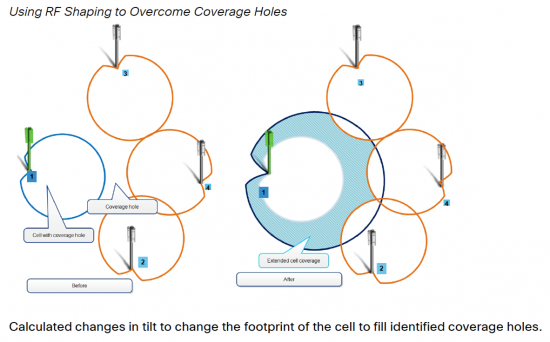































In the first part of this blog series (SON Isn't Just Network KPI Improvements-Part 1), we discussed the need for automation and simplification to address growing challenges in network complexity. This part will discuss 3 areas that are good starting points for any MNO considering a SON deployment and why RF engineers eagerly embrace this new solution.
1. Parameter Auditing
Today, cell configuration auditing is extremely difficult, time intensive, and subject to human error. Engineers go through an exhaustive process of defining and updating audit profiles then matching cells with the profiles. Many MNOs use one "golden" profile to audit all cells against, with the focus on general consistency and identifying the easiest problems to fix. A typical audit takes two-to-four hours per audit and is performed every two-to-three weeks. The RF engineer simply has no time to perform an in-depth analysis to determine if anything other than the standard parameters are incorrectly set.
RF engineers immediately see the benefit of a SON solution that enables the creation and enforcement of RF parameter profiles. It removes configuration errors in the network, reduces deployment timeline by automating the configuration of new cells, and audits against an unlimited number of "golden profiles" for cells in different RF environments (for example, urban, suburban, rural) areas.
2. Load Balancing
An engineer cannever really effectively load balance heavily loaded cells, as network usage is so dynamic and unpredictable. Without SON, an engineer manually re-configures a cell, an action which can take more than two hours per cell, and becomes even more complex with multiple cells per site. Distributed SON functionality meant to address these congestion issues can be radio resource and signaling intensive, providing a less than optimal user experience, leading many engineers to disable the function.
As a result, a majority of cells with load imbalance issues are not addressed. As a result the network is congested, has inefficient utilization of RAN capacity and spectrum, and ultimately, carrier, small cell or macro site capacity additions occur earlier than necessary to address the problem.

Cisco SON enables RF engineers to fully automate the load balancing process. It works 24/7 on 100% of all cells, identifying cells suffering from congestion in near real time and steers UEs (User Equipment) to less loaded cells. Once a loaded condition passes, i.e. rush hour traffic or sporting event at a stadium, the system automatically restores the cell to its original values. Automated and dynamic load balancing stretches network capacity, delaying or deferring expansions.
3. RET Antenna Optimization
RET antennas provide the MNO with the greatest potential for maximizing network optimization, but are the least utilized of all the tools available to the RF engineer.
Balancing the RF environment is an intricate and exceptionally time-consuming task. Engineers identify candidate antennas with RF planning tools, select the proper tilt setting, monitor and assess the impact of the tilt on the affected and surrounding sites, and possibly make additional tilts to compensate for the tilt made to the selected site. In most instances, the impact of a tilt change is not observed for several days, so the engineer must continually return to monitoring and observing KPIs on the affected cells until they are confident the tilt was effective.
 Click on image for larger view.
Click on image for larger view.Automating RET antenna optimization gives the RF engineer a tremendous boost of productivity. The Cisco SON solution can monitor all RET equipped cells, identify interfering cells or coverage holes, then automatically down-tilt to reduce interference or up-tilt to solve coverage holes. A feedback loop verifies the KPI improvements on the tilted cell, as well as on the surrounding cells, and reverts the tilt if there is degradation in performance.
 Click on image for larger view.
Click on image for larger view.To Summarize
Mounting financial performance pressures being exerted on MNOs and the growing complexity of the network are forcing the MNO to transformation both their network and their operating processes. Cisco SON is a critical solution to help MNOs gain control of the network, and reduce its complexity by leveraging the skills of their RF engineers. In one national MNO network, over a 12-month period, Cisco SON performed 8 billion SON actions. That breaks down to 8,000 SON actions per cell per year or 162 SON actions each second across the network, an impossible activity level for any RF workforce to accomplish.
A successful SON deployment requires thorough planning of the integration into the daily processes of the workforce, not just into the network elements. The expertise Cisco has in deploying SON in the global MNO market is unparalleled. Cisco Advanced Services teams have built industry-leading best practices to quickly integrate SON into RAN vendor's systems, build new processes within the MNO to leverage the platform's capabilities and execute a methodology that gains acceptance from the wary RF engineer. After deploying Cisco SON, a MNO will realize a solution that has automated and simplified their processes, resulting in a more efficient and better performing network.
For more information, follow us on Twitter @CiscoSP360.
 Hot Tags :
mobile network operator
Load Balancing
network performance
Cisco SON
parameter auditing
RET antenna
Hot Tags :
mobile network operator
Load Balancing
network performance
Cisco SON
parameter auditing
RET antenna